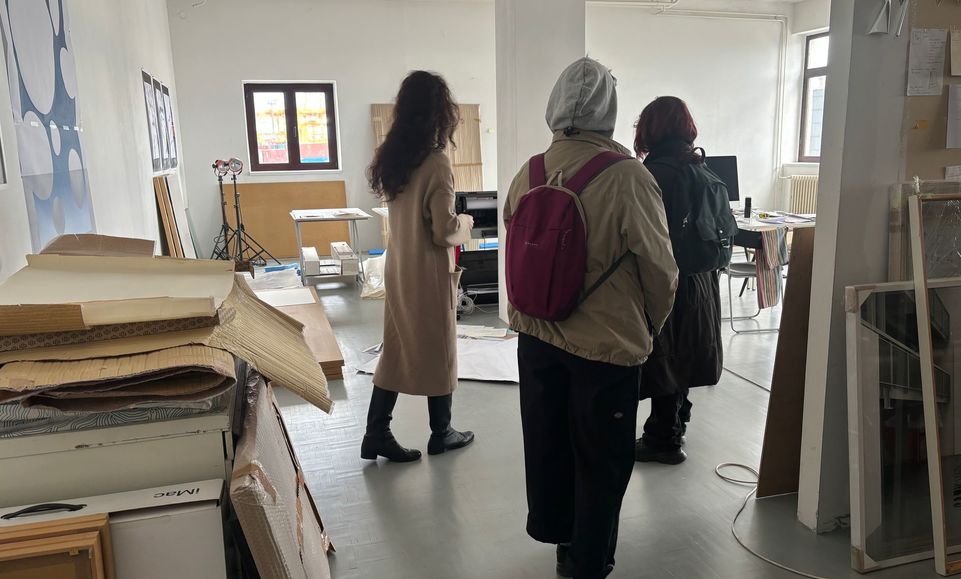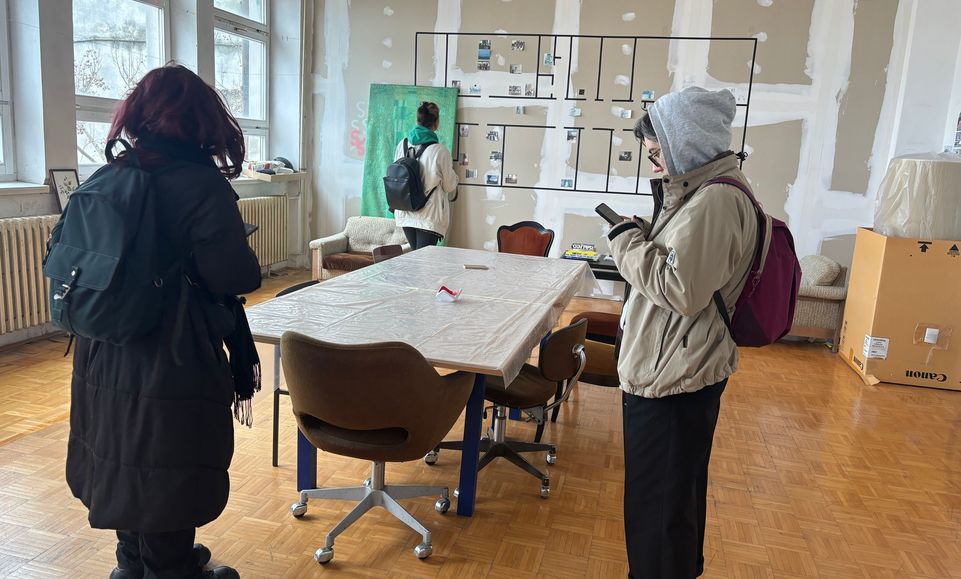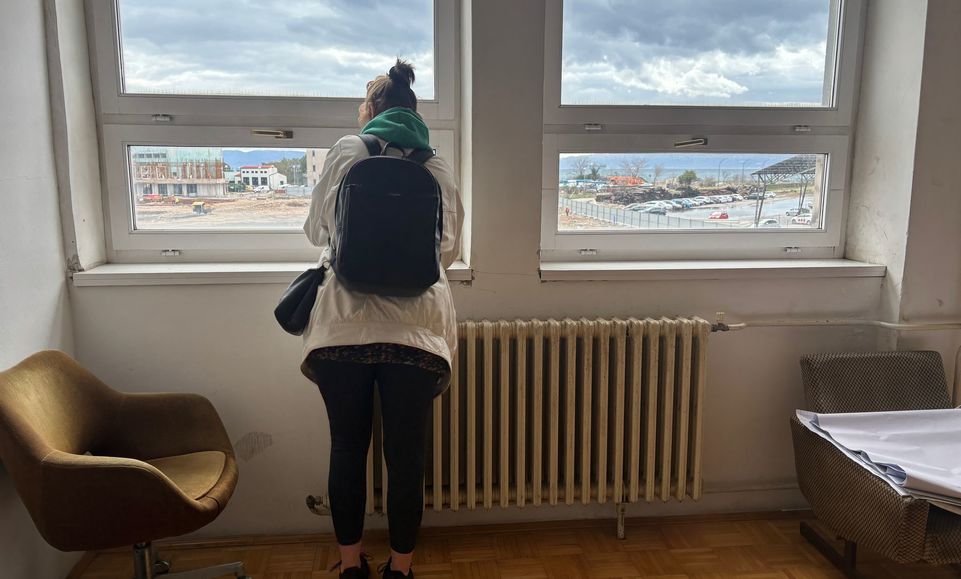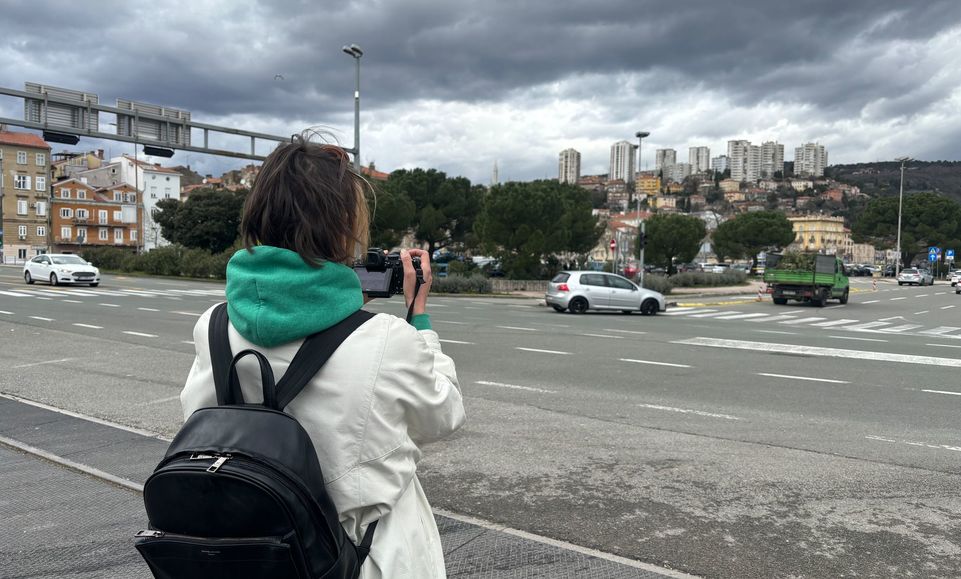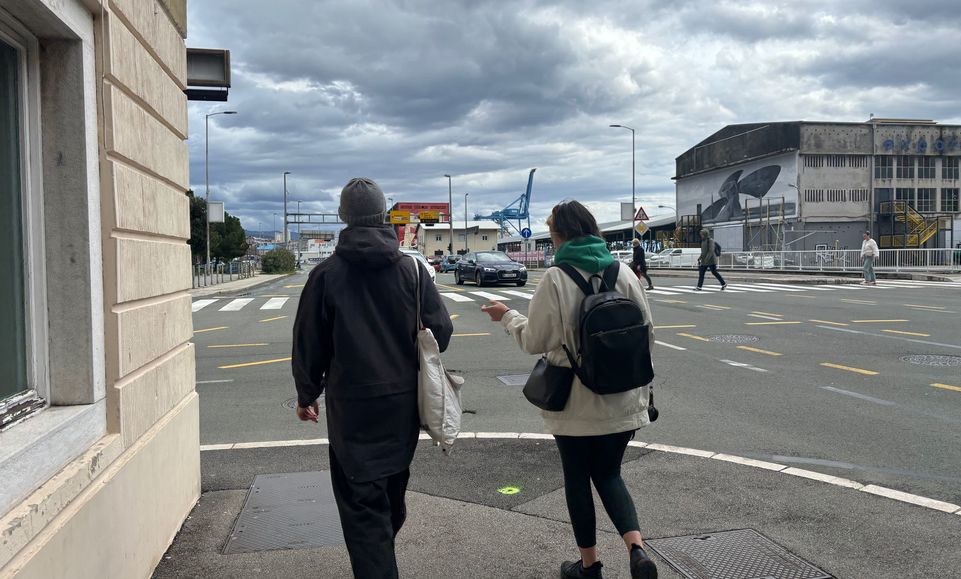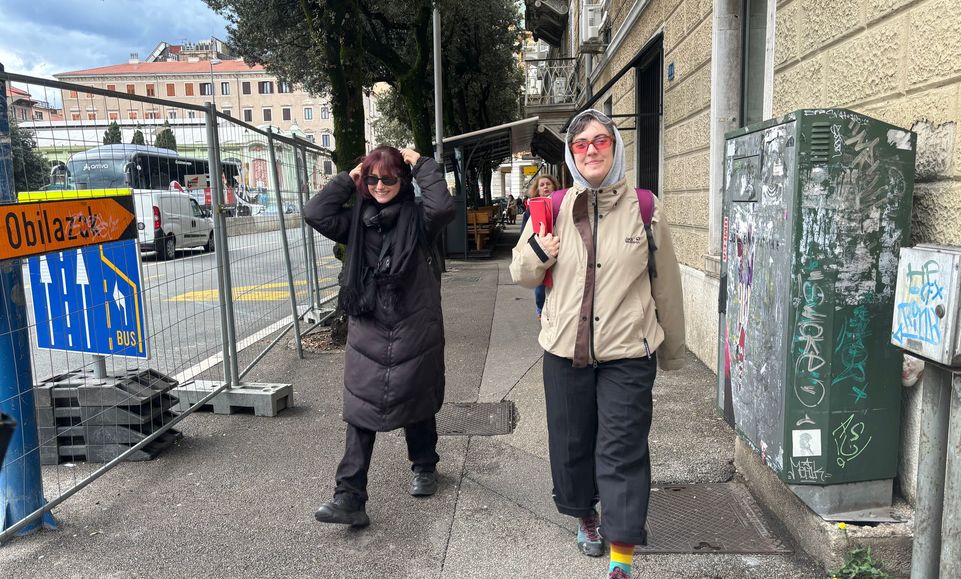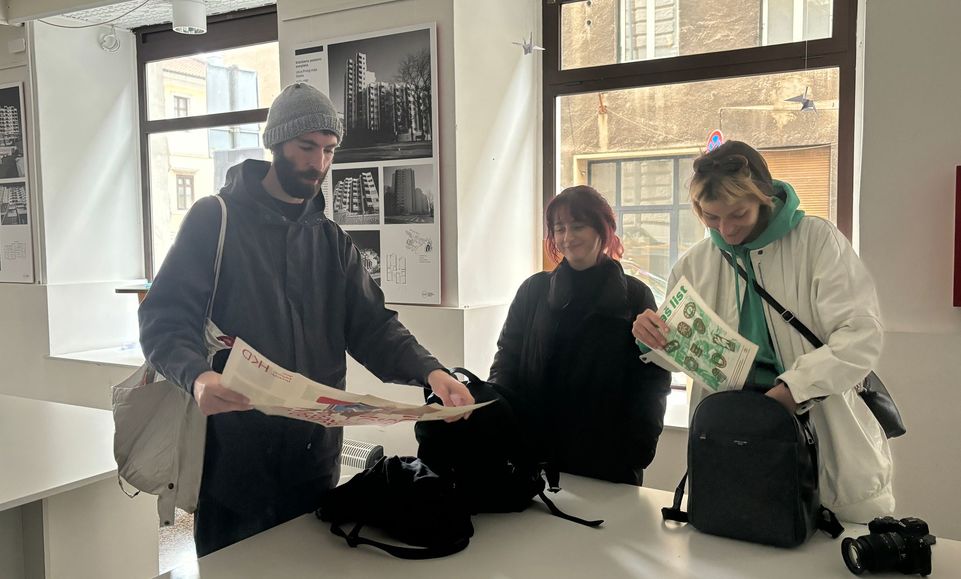The visit for residents of Rijeka participating in the OPE.N project started with a stroll to the former Rikard Benčić factory complex and the Sugar Refinery. Over the past decade, this area has been transformed into Rijeka's new cultural quarter, known as Benčić, or the "art quarter." Within this revitalized space, several of Rijeka's key cultural institutions now operate, including the Museum of Modern and Contemporary Art (MMSU), the Museum of the City of Rijeka, the Rijeka City Library, and the Children's House. The establishment of this cultural center has created opportunities to strengthen the independent support sector. Notably, the Rijeka City Library has developed a wide-ranging program in collaboration with local associations and individuals involved in the city's cultural scene.
Staff members from the Rijeka City Library presented to the residents the evolution of the cultural quarter, discussing how they are building cultural infrastructure and acting as a "hub" to foster collaboration within the independent sector while providing space for much-needed educational programs.
The visit also focused on the Teatrino building, a former warehouse for nearby factories, which remains untouched by renovations. The city is currently exploring ways to repurpose the Teatrino, but without a clear vision, this building presents a chance for more stable accommodations for the independent sector.
The group then reviewed vacant city spaces in the Brajda and Potok neighborhoods, noting the absence of adequate city policies regarding space rentals (apart from commercial ones), which fail to meet the needs of the independent scene and limit the potential for creating a vibrant cultural district outside institutional settings. The abandoned Brajda market pavilion was pointed out as an example of a maintained city space that has not been utilized, despite interest from potential users.
Next, the residents visited the shared space of the Urbani Sevare associations and the Rijeka Architects' Association. Representatives from these organizations discussed their projects and activities, which focus on activating public city spaces and revitalizing neglected areas through sustainable urban development and participatory urbanism, while valuing the city's architectural and natural assets. This space, rented from the city, is used for exhibitions, educational workshops, and office activities. The associations also shared their vision for creating a city urban center that would function as an open day center for a wider audience, aimed at promoting urban planning and development.
The Filodrammatica building on Rijeka's Korzo was highlighted as a successful example of the independent sector utilizing city space. This venue features a large performance hall, gallery, and office space totaling 700 m², which is shared by several associations, including the Molekula Association, Drugo More, Filmaktiv, and Prostor Plus. Drugo More is particularly noted for its long-standing contributions to the independent scene. Filodrammatica hosts various programs, including independent theater productions, contemporary dance classes, film education, and exhibitions of contemporary artists. However, challenges related to maintaining the building—protected as a valuable heritage site—were discussed, including restrictions on investments and adaptations to meet the specific needs of the associations.
The visit concluded with a tour of the IVEX building, a unique “hybrid” space caught in a legal gray area between port and city management. This former administrative building and wine bottling plant now houses artists from the Delta 5 collective, students and staff from Deltalab—the University of Rijeka's center for urban transition and architecture—employees from Rijeka's HNK Zajc, a mountaineering society, and an underground club. Attention was drawn to the art studios rented by various artists, including Igor Eškinja, Milijana Babić, Ana Tomić, Marino Krstačić Furić, Ana Labudović, Tomislav Rajnović, Nadija Mustapić, Toni Meštrović, and the Fokus group, who have been utilizing this space for the past decade, continuing a tradition established by the Molekula Association and the Academy of Applied Arts.
